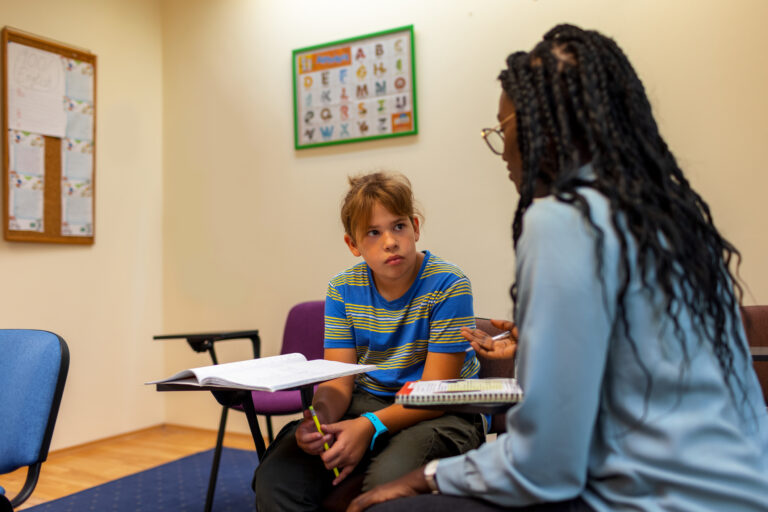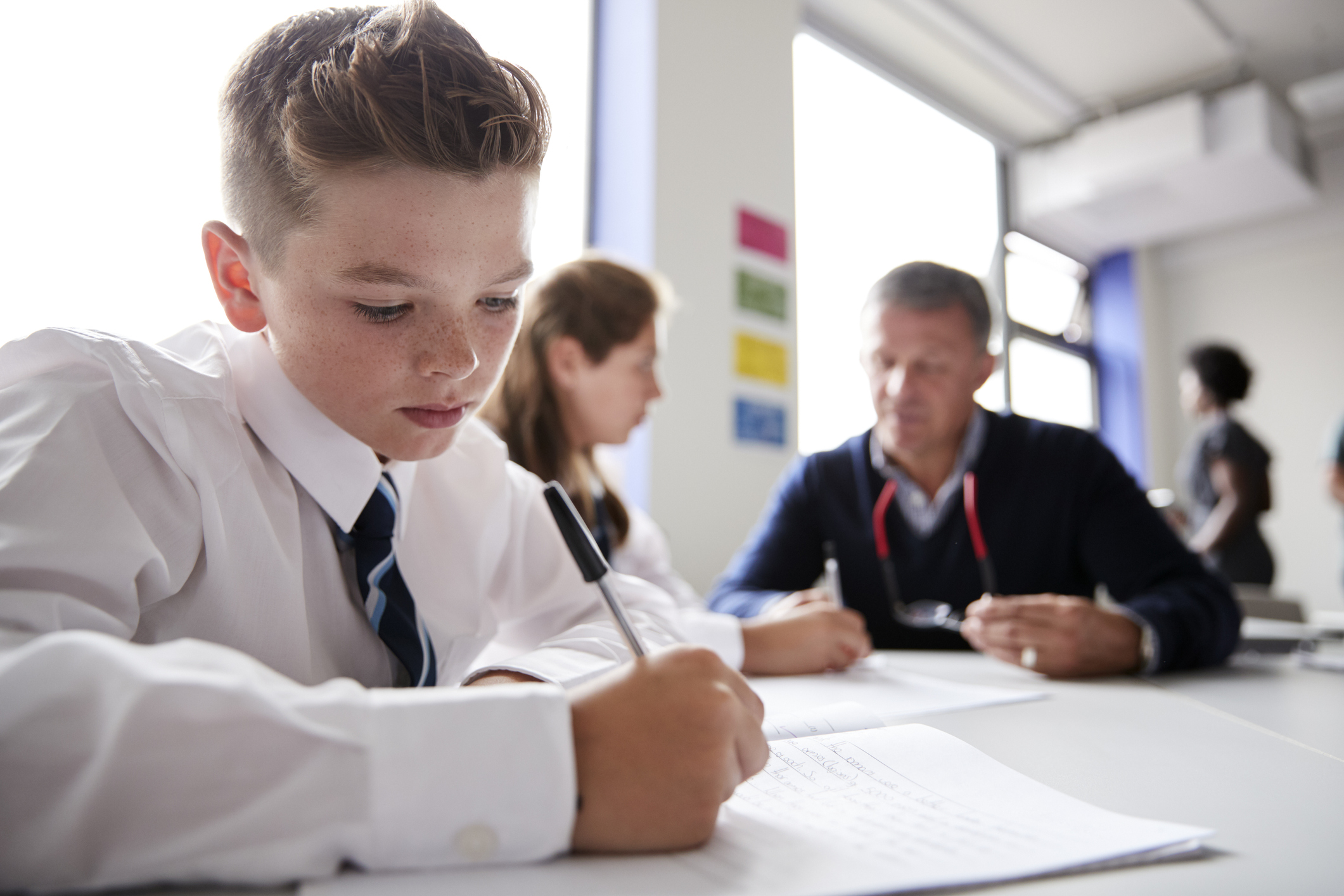Welcome to our blog post on the impact of trauma on learning, specifically focusing on creating trauma-sensitive classroom environments. Trauma is a pervasive issue that affects many students, and its effects can significantly impact their ability to learn and thrive in an educational setting.
In this post, we will explore the various ways in which trauma can affect students’ performance and behaviour, particularly in terms of their cognitive abilities and social-emotional skills. We will also delve into the long-term consequences of trauma on learning, highlighting the importance of addressing these issues early on.
Recognizing the signs of trauma in students is crucial for educators. We will discuss the physical, behavioural, and academic indicators that may suggest a student has experienced trauma. By being aware of these signs, teachers can better support their students and create a safe and nurturing learning environment.
Building a trauma-sensitive classroom is essential in helping students heal and thrive. We will explore strategies for creating a safe and supportive classroom, such as establishing clear boundaries, promoting positive relationships, and implementing trauma-informed teaching strategies. Additionally, we will discuss the importance of integrating self-care techniques for students, as self-care is an essential component of trauma recovery.
Teachers and school staff play a vital role in addressing trauma in the educational setting. We will discuss the importance of professional development on trauma-informed practices, as well as the benefits of collaborating with mental health professionals. Furthermore, we will explore effective ways of communicating with families about trauma, fostering a supportive network between home and school.
By understanding the impact of trauma on learning and creating trauma-sensitive classroom environments, educators can provide the necessary support and resources for students to overcome the challenges they face. Join us as we delve into this important topic and discover strategies to help students heal and succeed academically.
Understanding Trauma and its Impact on Learning
Trauma refers to a deeply distressing or disturbing experience that overwhelms an individual’s ability to cope. It can result from various sources, such as abuse, neglect, violence, natural disasters, or loss. Understanding trauma and its impact on learning is crucial for educators to effectively support students who have experienced trauma.
Definition and Types of Trauma
Trauma can be classified into different types, including acute trauma, chronic trauma, and complex trauma. Acute trauma refers to a single traumatic event, such as a car accident or natural disaster. Chronic trauma involves repeated or prolonged exposure to traumatic situations, such as ongoing abuse or living in a war zone. Complex trauma refers to the cumulative impact of multiple traumatic events, often occurring in interpersonal relationships, such as childhood abuse or neglect.
The Impact of Trauma on the Brain
Experiencing trauma can have profound effects on the brain’s development and functioning. Traumatic experiences can trigger the release of stress hormones, such as cortisol, which can disrupt neural pathways and impair cognitive processes. The amygdala, responsible for emotional processing, may become hyperactive, leading to heightened fear responses and difficulties in regulating emotions. The prefrontal cortex, responsible for executive functioning and decision-making, may also be affected, resulting in challenges with attention, memory, and impulse control.
Trauma’s Effects on Learning and Academic Performance
The impact of trauma on learning can manifest in various ways. Students who have experienced trauma may struggle with concentration, memory, and information processing. They may have difficulties organizing their thoughts and following instructions. Trauma can also impair students’ ability to regulate their emotions, leading to emotional outbursts or withdrawal. These challenges can significantly affect academic performance, resulting in lower grades, decreased motivation, and disengagement from learning.
Secondary Effects of Trauma on Learning
In addition to the immediate impact on learning, trauma can have long-term consequences. Students who have experienced trauma may have lower self-esteem, reduced self-confidence, and a negative perception of their abilities. They may also exhibit behavioural issues, such as aggression, defiance, or withdrawal. These secondary effects of trauma can further hinder their learning and social interactions, creating a cycle of academic and emotional difficulties.
Trauma’s Influence on Relationships and Attachment
Trauma can disrupt students’ ability to form healthy relationships and attachments with peers and adults. Trust issues, fear of abandonment, and difficulties in forming connections can arise due to past traumatic experiences. These challenges can impact students’ interactions within the classroom, hindering their ability to collaborate, participate, and feel safe in the learning environment.
Understanding the nature and impact of trauma is vital for educators to create trauma-sensitive classroom environments. By recognizing the effects of trauma on students’ cognitive, emotional, and social well-being, educators can implement strategies that support their healing, resilience, and academic success. In the following sections, we will explore the effects of trauma on students’ performance and behaviour, as well as ways to recognize signs of trauma in the classroom.
Effects of Trauma on Students’ Performance and Behaviour
Experiencing trauma can have significant effects on students’ academic performance and behaviour within the classroom. It is essential for educators to understand these effects in order to provide appropriate support and accommodations for students who have experienced trauma.
Impact on Cognitive Abilities
Trauma can impair various cognitive abilities, making it challenging for students to effectively engage in learning activities. Some common cognitive effects of trauma include:
- Attention and Concentration Difficulties: Students who have experienced trauma may struggle to maintain focus and attention. They may have difficulty filtering out distractions and staying engaged in classroom tasks.
- Memory Problems: Traumatic experiences can impact students’ ability to retain and recall information. They may have difficulty encoding new information into memory or retrieving previously learned material.
- Executive Functioning Challenges: Trauma can affect the development and functioning of the prefrontal cortex, which is responsible for executive functions such as planning, organizing, problem-solving, and impulse control. Students may struggle with tasks that require these skills.
- Information Processing Issues: Trauma can disrupt efficient information processing, leading to difficulties in understanding and integrating new information. Students may require additional time and support to process and make sense of academic content.
Impact on Social and Emotional Skills
Trauma can also have a significant impact on students’ social and emotional skills, affecting their behaviour and interactions within the classroom. Some common social and emotional effects of trauma include:
- Emotional Regulation Difficulties: Students who have experienced trauma may struggle to regulate their emotions effectively. They may exhibit intense emotional reactions, have difficulty calming down after a triggering event, or experience frequent mood swings.
- Social Withdrawal or Isolation: Trauma can lead to feelings of fear, mistrust, and insecurity, causing students to withdraw from social interactions. They may hesitate to engage with peers or form meaningful relationships.
- Hyperarousal or Hyperarousal: Trauma can result in either hyperarousal (excessive alertness and heightened reactivity) or hyperarousal (numbing and disengagement). Students may exhibit behaviours such as restlessness, irritability, aggression, or, conversely, appear detached and disinterested.
- Relationship Challenges: Trauma can impact students’ ability to form and maintain healthy relationships. They may struggle with trust, have difficulty establishing boundaries, or exhibit challenges in empathy and perspective-taking.
Long-term Consequences of Trauma on Learning
It is important to recognize that the effects of trauma on students’ performance and behaviour can extend beyond the immediate impact. If left unaddressed, trauma can have long-term consequences on their educational journey. Some potential long-term effects include:
- Academic Disengagement: Students who have experienced trauma may disengage from learning due to feelings of hopelessness, low self-esteem, or a lack of motivation. This disengagement can lead to academic underachievement and a decreased sense of self-efficacy.
- School Attendance Issues: Trauma can contribute to difficulties in attending school regularly. Students may experience anxiety or fear related to the school environment, which can lead to frequent absences or tardiness.
- Increased Risk of Learning Disabilities: Trauma can contribute to learning difficulties and increase the risk of developing learning disabilities. The disrupted brain development and cognitive impairments associated with trauma can impact various aspects of learning, including reading, writing, and math skills.
- Mental Health Challenges: Trauma is closely linked to mental health issues such as anxiety, depression, and post-traumatic stress disorder (PTSD). These conditions can further hinder students’ ability to engage in learning and cope with the demands of the classroom.
Understanding the effects of trauma on students’ performance and behaviour is crucial for educators to provide appropriate support and accommodations. In the following sections, we will explore strategies for recognizing signs of trauma in students and creating trauma-sensitive classroom environments that promote healing and academic success.
Recognizing Signs of Trauma in Students
Recognizing signs of trauma in students is essential for educators to provide appropriate support and create a trauma-sensitive classroom environment. While not all students may exhibit overt signs of trauma, there are several indicators that can help identify those who may have experienced traumatic events.
Physical Indicators
- Sleep Disturbances: Students who have experienced trauma may exhibit difficulties falling asleep, staying asleep, or experiencing nightmares related to their traumatic experiences.
- Changes in Appetite: Trauma can impact students’ eating habits, leading to significant weight loss or gain. They may also exhibit a lack of interest in food or engage in disordered eating behaviours.
- Physical Complaints: Students may frequently report physical symptoms such as headaches, stomach-aches, or other unexplained pain. These physical complaints can be manifestations of the psychological distress associated with trauma.
- Hyperarousal Symptoms: Some students may display signs of hyperarousal, including heightened startle response, increased heart rate, rapid breathing, or sweating. These physiological responses can indicate a heightened state of anxiety or fear.
Behavioural Indicators
- Withdrawal and Isolation: Students who have experienced trauma may withdraw from social interactions and isolate themselves from peers. They may avoid participating in group activities or prefer to spend time alone.
- Hypervigilance: Students may exhibit a constant state of alertness, scanning their environment for potential threats. They may appear on edge, easily startled, or have difficulty relaxing.
- Emotional Outbursts: Trauma can lead to emotional dysregulation, causing students to have frequent emotional outbursts, such as anger or tears, that are disproportionate to the situation.
- Aggressive Behaviours: Some students may display aggressive behaviours, such as physical or verbal aggression, as a way to protect themselves or regain control in situations that trigger their trauma.
Academic Indicators
- Academic Decline: Students who have experienced trauma may exhibit a decline in academic performance. They may struggle to focus, complete assignments, or demonstrate a decrease in motivation and effort.
- Difficulty Concentrating: Trauma can affect students’ ability to concentrate and sustain attention. They may have trouble staying focused during class or become easily distracted by their thoughts or surrounding stimuli.
- Memory Problems: Students may experience difficulties with memory recall, both short-term and long-term. They may struggle to remember information taught in class or have challenges retaining new concepts.
- Disengagement from Learning: Trauma can lead to a disinterest or disengagement from learning. Students may appear apathetic, detached, or exhibit a lack of participation in classroom activities.
Recognizing these signs in students can help educators identify those who may benefit from additional support and resources. It is important to approach these indicators with empathy, understanding, and a trauma-informed lens. In the following sections, we will explore strategies for creating trauma-sensitive classroom environments that promote healing, resilience, and academic success for students who have experienced trauma.
Creating a Trauma-Sensitive Classroom Environment
Creating a trauma-sensitive classroom environment is crucial for supporting students who have experienced trauma. By establishing a safe and nurturing atmosphere, educators can help students feel secure, build resilience, and maximize their learning potential. Here are some key strategies for creating a trauma-sensitive classroom environment:
Building a Safe and Supportive Classroom
- Establishing Clear Boundaries: Clearly communicate and enforce rules and expectations in a consistent and predictable manner. This provides students with a sense of safety and structure.
- Cultivating a Positive Classroom Climate: Foster a positive and inclusive classroom culture where students feel respected, valued, and supported. Encourage kindness, empathy, and cooperation among students.
- Creating Physical Safety: Ensure that the classroom environment is physically safe by arranging furniture in a way that allows for easy movement and minimizes potential triggers. Consider sensory needs and provide calming spaces or sensory tools if necessary.
- Promoting Emotional Safety: Create an emotionally safe space by encouraging open communication, active listening, and non-judgmental acceptance. Provide opportunities for students to share their thoughts and feelings, fostering a sense of belonging.
Implementing Trauma-Informed Teaching Strategies
- Building Relationships: Develop trusting relationships with students by showing genuine care, empathy, and understanding. This helps create a sense of safety and support in the classroom.
- Providing Predictability and Structure: Establish consistent routines and schedules to provide a sense of predictability and stability for students. Clearly communicate any changes in advance to minimize anxiety.
- Offering Choices and Autonomy: Empower students by providing choices within appropriate limits. This helps them regain a sense of control and autonomy over their learning experience.
- Incorporating Sensory Regulation Techniques: Recognize and address sensory needs by incorporating sensory breaks, providing fidget tools, or creating calming spaces. This supports students in self-regulation and managing sensory overload.
Integrating Self-Care Techniques for Students
- Teaching Relaxation and Mindfulness Techniques: Introduce relaxation and mindfulness activities, such as deep breathing exercises or guided imagery, to help students manage stress and anxiety.
- Promoting Physical Movement: Encourage physical activity and movement breaks throughout the day to help students release tension, improve focus, and regulate their energy levels.
- Encouraging Self-Expression: Provide opportunities for students to express themselves through art, writing, or other creative outlets. This allows them to process their emotions and experiences in a supportive environment.
- Fostering Peer Support and Collaboration: Create opportunities for students to support and collaborate with their peers. Encouraging positive social interactions can foster a sense of belonging and connection.
By implementing these strategies, educators can create a trauma-sensitive classroom environment that supports the healing, growth, and academic success of students who have experienced trauma. In the following sections, we will explore the role of teachers and school staff in addressing trauma, as well as the importance of professional development and collaboration with mental health professionals.
Role of Teachers and School Staff in Addressing Trauma
Teachers and school staff play a vital role in addressing trauma and creating a supportive environment for students who have experienced trauma. By understanding the impact of trauma and implementing trauma-informed practices, educators can effectively support students’ healing and academic success. Here are key aspects of the role of teachers and school staff in addressing trauma:
Professional Development on Trauma-Informed Practices
- Training on Trauma Awareness: Educators should receive training to increase their understanding of trauma, its effects on learning, and the importance of creating trauma-informed environments. This training should include information on the signs of trauma, the neurobiology of trauma, and strategies for supporting students who have experienced trauma.
- Implementing Trauma-Informed Strategies: Teachers and school staff should receive training on trauma-informed teaching strategies, such as providing choices, fostering positive relationships, and creating a safe and supportive classroom environment. This empowers educators to effectively address the unique needs of students impacted by trauma.
- Building Resilience and Self-Care: Professional development should emphasize the importance of self-care for educators. Teachers and school staff need to develop strategies to manage their own well-being to better support students who have experienced trauma.
Collaborating with Mental Health Professionals
- Communication and Coordination: Teachers and school staff should collaborate closely with mental health professionals, such as school counsellors, psychologists, and social workers. Regular communication and coordination are essential to ensure that students receive the appropriate support and interventions.
- Referrals and Support Services: Educators should have access to resources and information about community-based support services and mental health professionals. They can assist in providing referrals and connecting students and families with the necessary resources.
- Individualized Support Plans: Collaborating with mental health professionals, teachers can develop individualized support plans for students who have experienced trauma. These plans can outline specific accommodations, interventions, and strategies to meet the unique needs of each student.
Communicating with Families About Trauma
- Establishing Open and Trusting Relationships: Teachers should strive to build strong relationships with families based on trust and open communication. Regular communication with families provides an opportunity to understand the student’s experiences and collaborate on strategies to support their well-being.
- Sharing Information and Resources: Educators can provide information to families about the impact of trauma on learning and suggest resources to support students at home. This can include books, websites, or workshops related to trauma and resilience.
- Creating a Supportive Network: By involving families in the process of addressing trauma, teachers can create a supportive network that extends beyond the classroom. This collaboration ensures that students receive consistent support and interventions both at school and at home.
By embracing their role in addressing trauma, teachers and school staff can play a vital part in creating a healing and supportive environment for students. Through ongoing professional development, collaboration with mental health professionals, and effective communication with families, educators can provide the necessary support for students to thrive academically and emotionally.







